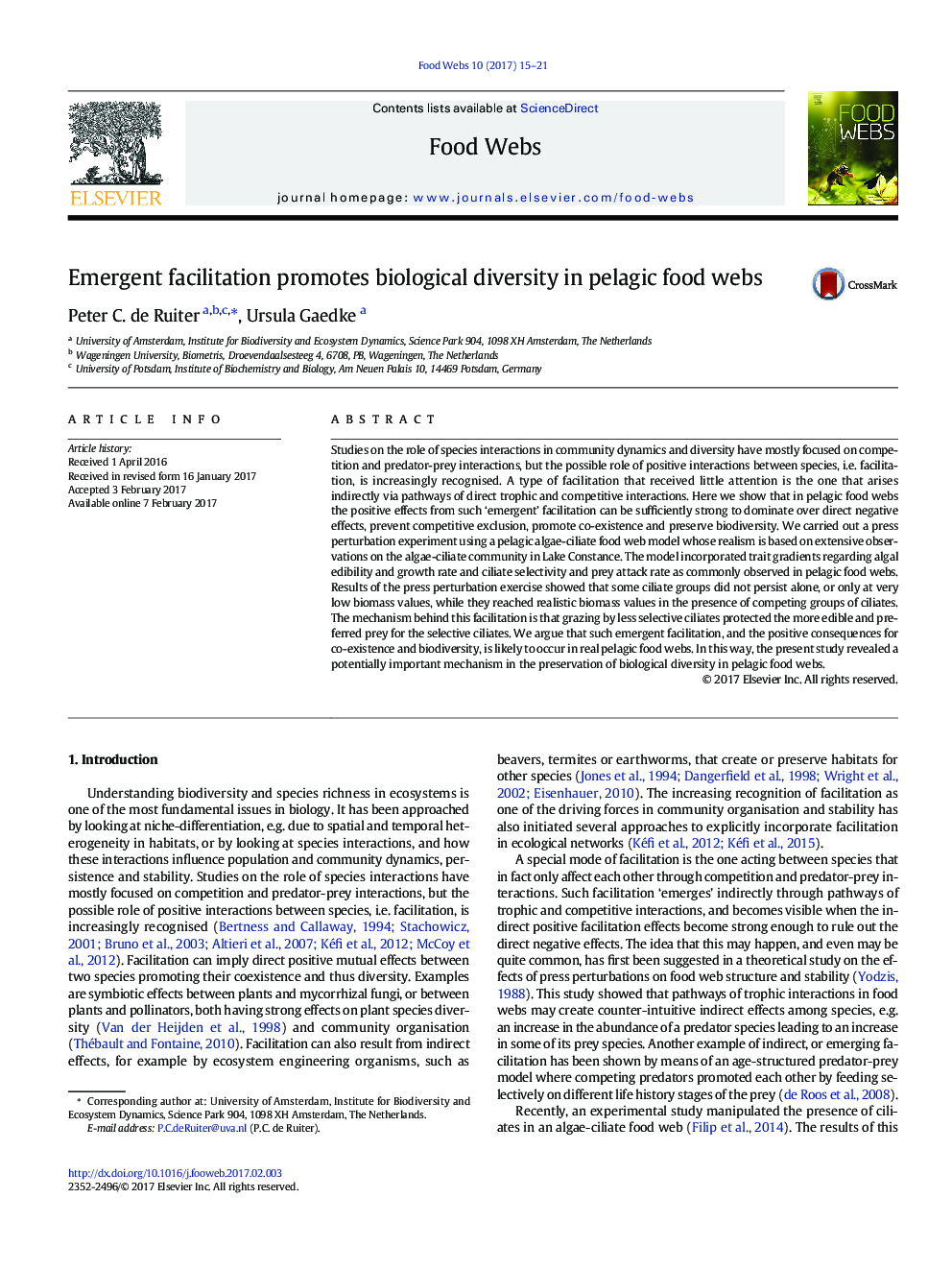| Article ID | Journal | Published Year | Pages | File Type |
|---|---|---|---|---|
| 5759839 | Food Webs | 2017 | 7 Pages |
Abstract
Studies on the role of species interactions in community dynamics and diversity have mostly focused on competition and predator-prey interactions, but the possible role of positive interactions between species, i.e. facilitation, is increasingly recognised. A type of facilitation that received little attention is the one that arises indirectly via pathways of direct trophic and competitive interactions. Here we show that in pelagic food webs the positive effects from such 'emergent' facilitation can be sufficiently strong to dominate over direct negative effects, prevent competitive exclusion, promote co-existence and preserve biodiversity. We carried out a press perturbation experiment using a pelagic algae-ciliate food web model whose realism is based on extensive observations on the algae-ciliate community in Lake Constance. The model incorporated trait gradients regarding algal edibility and growth rate and ciliate selectivity and prey attack rate as commonly observed in pelagic food webs. Results of the press perturbation exercise showed that some ciliate groups did not persist alone, or only at very low biomass values, while they reached realistic biomass values in the presence of competing groups of ciliates. The mechanism behind this facilitation is that grazing by less selective ciliates protected the more edible and preferred prey for the selective ciliates. We argue that such emergent facilitation, and the positive consequences for co-existence and biodiversity, is likely to occur in real pelagic food webs. In this way, the present study revealed a potentially important mechanism in the preservation of biological diversity in pelagic food webs.
Related Topics
Life Sciences
Agricultural and Biological Sciences
Agricultural and Biological Sciences (General)
Authors
Peter C. de Ruiter, Ursula Gaedke,
